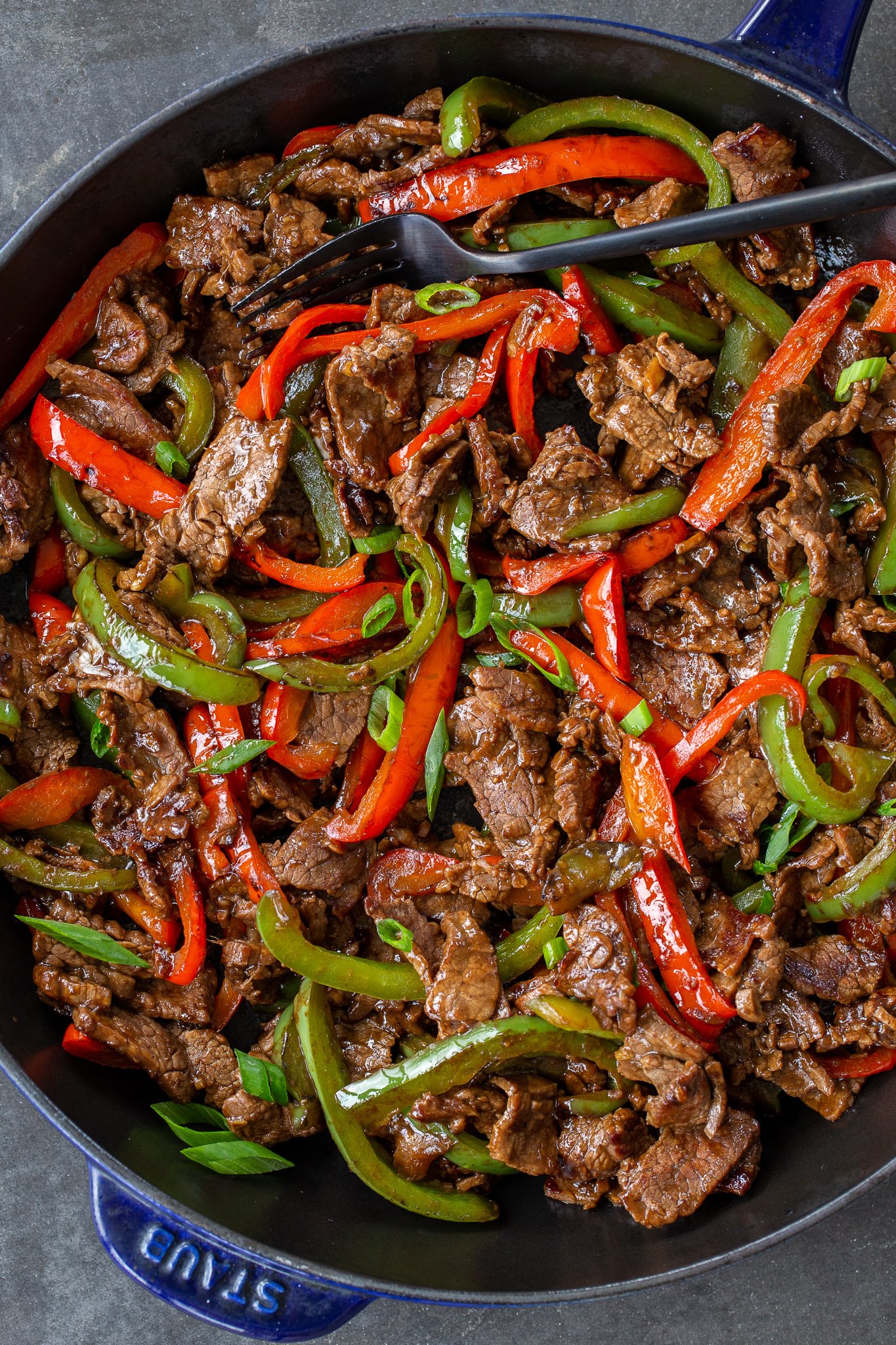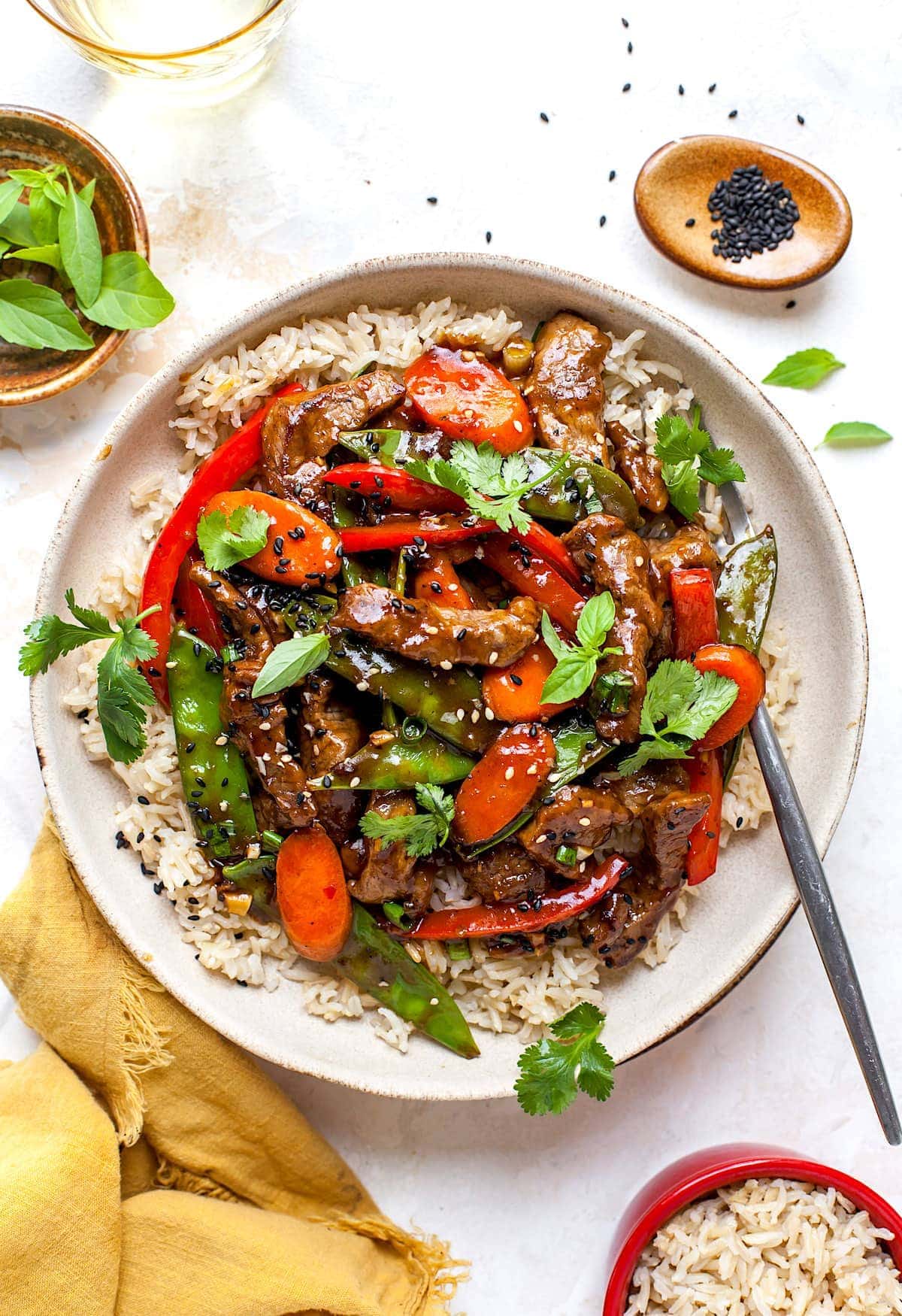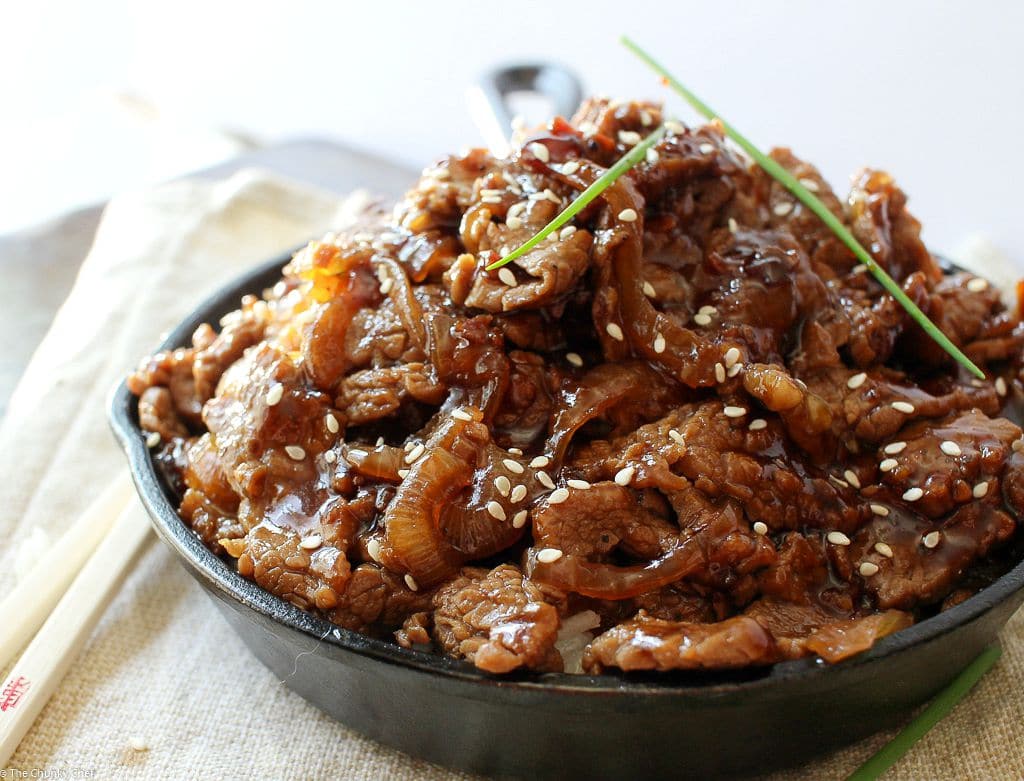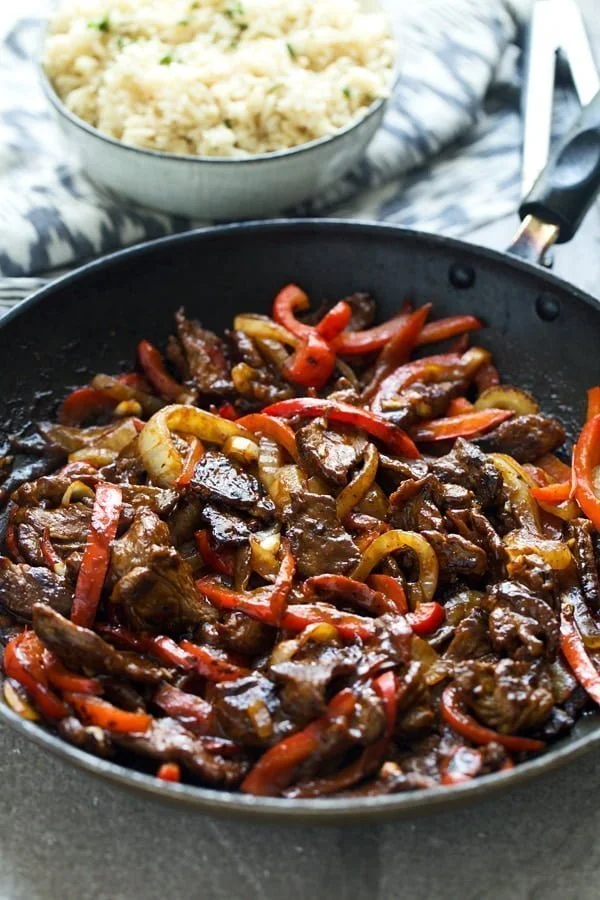Beef Stir-Fry with Peppers: A Culinary Journey from Wok to Plate

Beef stir-fry with peppers is a culinary chameleon, adapting effortlessly to various tastes and skill levels. From a quick weeknight dinner to a sophisticated dish showcasing seasonal peppers, its versatility makes it a staple in kitchens worldwide. This article delves deep into the heart of this beloved dish, exploring its history, variations, techniques, and the secrets to achieving perfect tenderness and vibrant flavor.
A Brief History: From Humble Beginnings to Global Phenomenon
The origins of stir-frying are deeply rooted in Chinese cuisine, evolving over centuries from practical necessity to a celebrated culinary art form. Initially driven by the need for quick and efficient cooking methods, particularly in regions where fuel was scarce, stir-frying utilized high heat and rapid cooking times to tenderize meat and vegetables while preserving their nutritional value and vibrant colors. The wok, a versatile cooking vessel, became the cornerstone of this technique, its curved sides allowing for even heat distribution and efficient tossing of ingredients.
While the precise origins of beef stir-fry with peppers are difficult to pinpoint, its popularity stems from the readily available ingredients and the ease with which it can be prepared. Beef, a staple protein source in many cultures, pairs beautifully with the sweetness and varying textures of peppers, creating a harmonious balance of flavors and textures. The dish’s adaptability allowed it to transcend regional boundaries, evolving into countless variations across Asia and beyond, each reflecting local culinary traditions and ingredient availability.
The Anatomy of a Perfect Beef Stir-Fry: Ingredients and Their Roles
The success of any beef stir-fry hinges on the careful selection and preparation of its ingredients. Let’s explore the key components:
-
The Beef: The cut of beef significantly impacts the final texture. Lean cuts like sirloin, flank steak, or tenderloin are ideal, as they are less prone to toughness and cook quickly. However, tougher cuts like chuck can also be used, provided they are properly marinated and thinly sliced against the grain to tenderize the fibers.
-
The Peppers: The choice of peppers is largely a matter of personal preference. Bell peppers offer a sweet and crisp bite, while jalapeños or serranos add a spicy kick. A mix of colors – red, yellow, orange, and green – not only enhances the visual appeal but also provides a range of flavors and textures.
-
The Sauce: The sauce is the heart and soul of the stir-fry, binding the flavors together and adding depth and complexity. Common ingredients include soy sauce (for saltiness and umami), oyster sauce (for richness and depth), rice vinegar (for acidity and brightness), cornstarch (for thickening), and sugar or honey (for balancing sweetness). Ginger, garlic, and chili garlic sauce are often incorporated to further enhance the flavor profile.

-
The Aromatics: Ginger and garlic are the unsung heroes of stir-fries, providing a fragrant base that elevates the overall flavor. Their pungent aromas are released during the initial stir-frying process, infusing the dish with a distinct savory note.

The Vegetables (Optional): While peppers are the stars of this particular stir-fry, other vegetables can be added to enhance the nutritional value and complexity of the dish. Onions, broccoli, carrots, snap peas, and mushrooms are all excellent additions.

Mastering the Technique: A Step-by-Step Guide
The beauty of stir-frying lies in its efficiency and precision. Here’s a step-by-step guide to achieving a perfect beef stir-fry with peppers:
-
Prepare the Ingredients: Thinly slice the beef against the grain. Cut the peppers into bite-sized pieces. Mince the garlic and ginger. Prepare the sauce by whisking together all the sauce ingredients in a small bowl.
-
Marinate the Beef (Optional): Marinating the beef for at least 30 minutes, or even overnight, will enhance its tenderness and flavor. A simple marinade can consist of soy sauce, cornstarch, and a touch of sesame oil.
-
Stir-Fry the Aromatics: Heat a wok or large skillet over high heat. Add a tablespoon of oil, then add the ginger and garlic. Stir-fry for about 30 seconds until fragrant.
-
Stir-Fry the Beef: Add the beef to the wok and stir-fry for 2-3 minutes, until it’s browned and cooked through. Avoid overcrowding the wok; work in batches if necessary.
-
Stir-Fry the Peppers: Add the peppers to the wok and stir-fry for another 2-3 minutes, until they are tender-crisp.
-
Add the Sauce: Pour the sauce over the beef and peppers. Stir-fry for another minute, allowing the sauce to thicken and coat the ingredients evenly.
-
Serve: Serve the beef stir-fry immediately over rice or noodles. Garnish with chopped green onions or sesame seeds, if desired.
Variations and Culinary Explorations:
The beauty of beef stir-fry with peppers lies in its adaptability. Experiment with different ingredients and flavor profiles to create your own signature dish:
-
Spicy Stir-Fry: Add chili flakes, sriracha, or a generous amount of chili garlic sauce to the stir-fry for a fiery kick.
-
Sweet and Sour Stir-Fry: Incorporate pineapple chunks and adjust the sauce with more sugar or honey for a sweet and tangy variation.
-
Peanut Stir-Fry: Add peanut butter or peanut sauce to the stir-fry for a rich and nutty flavor.
-
Ginger-Scallion Stir-Fry: Emphasize the ginger and scallions by adding more of these aromatics and adjusting the sauce accordingly.
-
Sesame Stir-Fry: Toss the finished dish with sesame oil and sesame seeds for a fragrant and nutty finish.
Tips for Success:
-
High Heat is Key: Stir-frying requires high heat to achieve the desired texture and prevent the beef from becoming tough.
-
Don’t Overcrowd the Wok: Overcrowding the wok will lower the temperature and result in steaming rather than stir-frying. Work in batches if necessary.
-
Use Fresh Ingredients: Fresh ingredients will always result in a more flavorful and vibrant stir-fry.
-
Taste and Adjust: Taste the stir-fry before serving and adjust the seasoning as needed.
-
Serve Immediately: Stir-fries are best served immediately after cooking, as they can become soggy if allowed to sit for too long.
Beyond the Plate: Cultural Significance and Modern Interpretations
Beef stir-fry with peppers is more than just a delicious meal; it represents a fusion of culinary traditions and a testament to the adaptability of food. Its global presence reflects the ongoing exchange of culinary ideas and the ever-evolving nature of gastronomy. From street food stalls to upscale restaurants, this dish continues to capture palates worldwide, proving its enduring appeal and versatility. Modern interpretations incorporate innovative techniques and ingredients, pushing the boundaries of this classic dish while retaining its core essence. Whether enjoyed as a comforting family meal or a sophisticated culinary creation, beef stir-fry with peppers remains a testament to the power of simple ingredients and masterful technique. Its journey from humble beginnings to global culinary icon is a story worth savoring, one bite at a time.

Video tentang Beef Stir-Fry with Peppers: A Culinary Journey from Wok to Plate
Penutup
Therefore, we hope this article has provided valuable insights on Beef Stir-Fry with Peppers: A Culinary Journey from Wok to Plate. We hope you found this article informative and helpful. See you in our next article!

